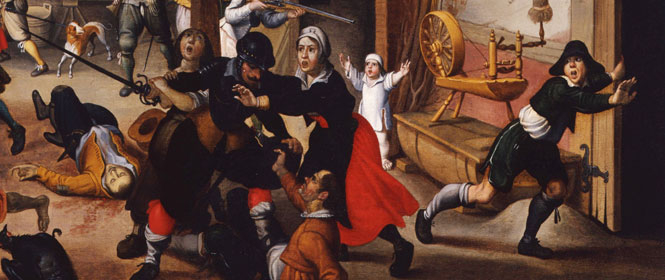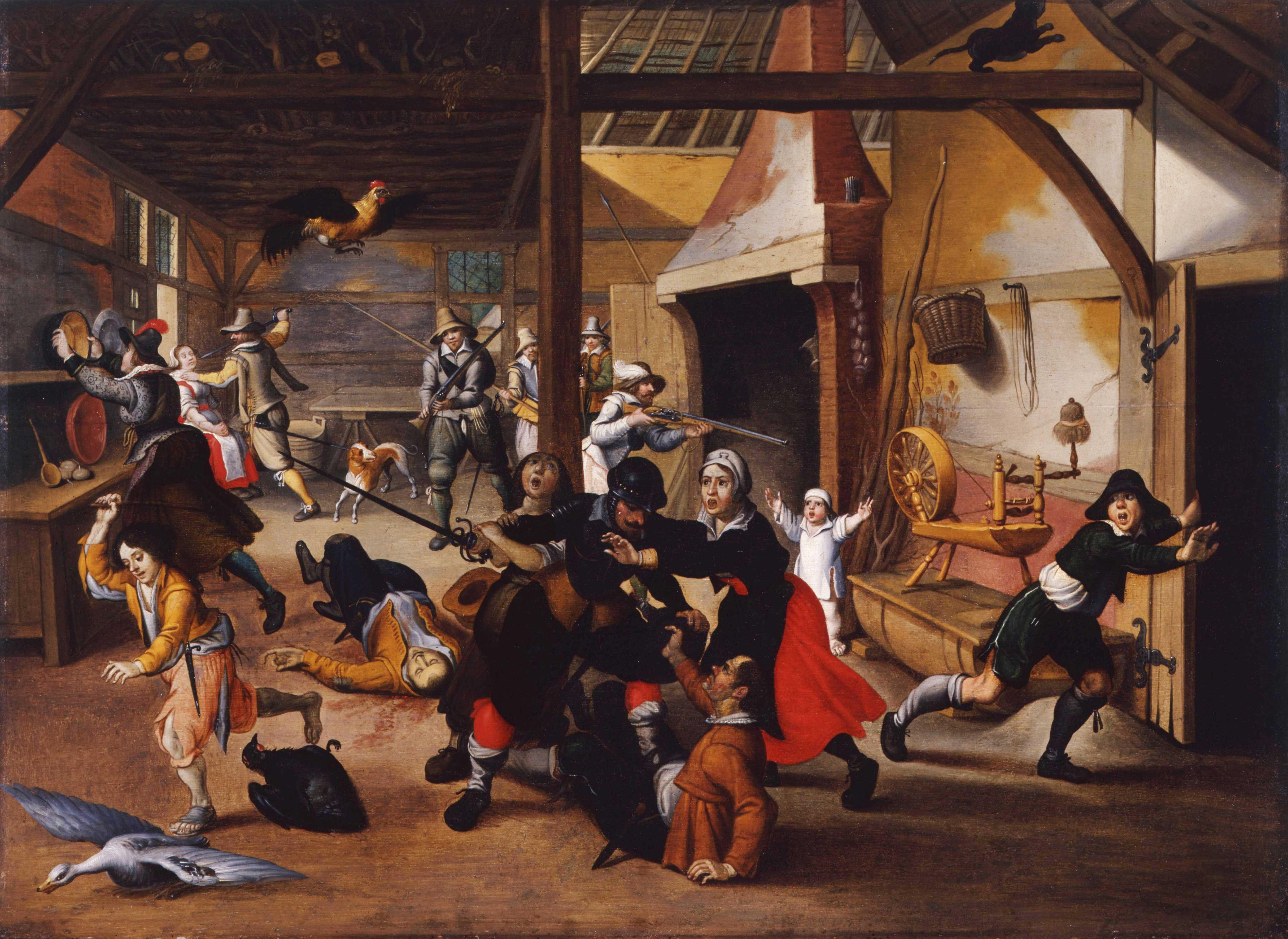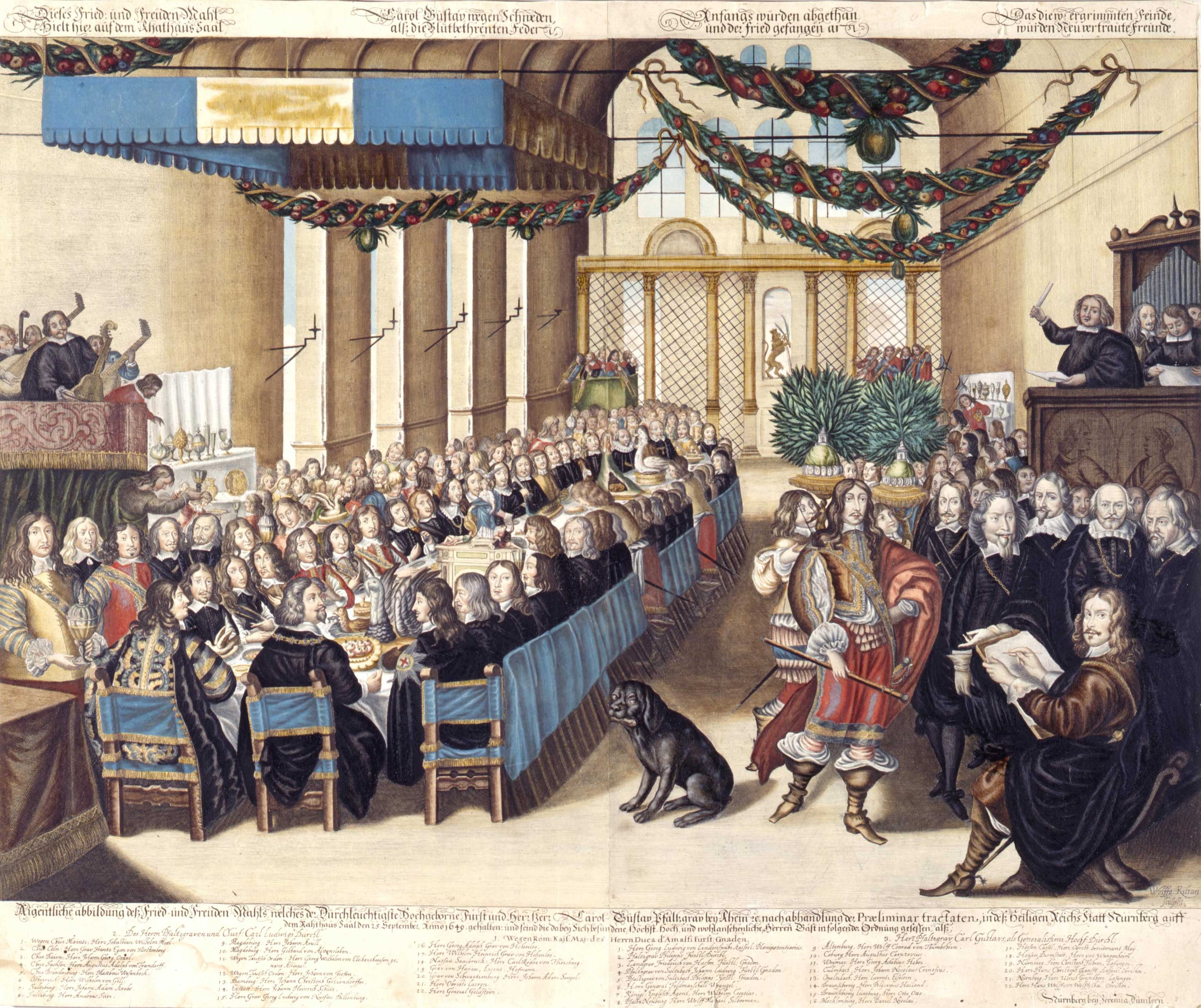
The Thirty Years’ War
The 23rd of May 2018 marks the 400th anniversary of the Defenestration of Prague, which is regarded as the beginning of the Thirty Years’ War. Here on the DHM blog, historian Dr. Gerhard Quaas provides a brief overview of the events that unfolded in its aftermath.
Despite the horrors of the two World Wars, the Thirty Years’ War – the first ‘great catastrophe’ in German history – remains deeply embedded in the collective consciousness of the German people. Even today, the numerous written accounts of brutal violence, plagues, famine, religious fanaticism, and the dissolution of state structures continue to evoke vivid images. Most people can still name the famous generals, like King Gustavus Adolphus of Sweden and Albrecht von Wallenstein. Pictorial representations, documents, weapons, and armaments bear witness to this long tragedy.
By the late 16th century confessional differences had intensified considerably, which led to the formation of two alliances: the Protestant Union (1608) and the Catholic League (1609). The Counter-Reformation measures imposed by the Habsburgs within their sphere of influence effectively stifled the chance of compromise and, with both sides backed into a corner, they were forced to make drastic decisions.
Constitutional Struggle and Confessional War
In Bohemia, under Hapsburg rule, the struggle for religious freedom came to a head on 23 May 1618 with a demonstrative act of resistance: the Defenestration of Prague. Two imperial regents and their secretary, after a heated exchange with representatives from the Protestant estates, were thrown out of a window. They survived the fall.
When the Bohemian rebels elected Frederick V, Elector Palatine – a Calvinist – as King of Bohemia, any chance of reaching a compromise was lost. Two days later, the previous King of Bohemia, Ferdinand II – a radical opponent of Protestantism – was elected Holy Roman Emperor.
War broke out. The poorly organised Bohemian army, which received little support from the Protestant Union, lost the Battle of White Mountain, near Prague, in one of the shortest battles in world history. Due to the brevity of his reign, Frederick V became disparagingly known as the ‘Winter King’ and was forced to flee; he went into exile in the Netherlands.
A brutal process of re-Catholicisation began in Bohemia: numerous insurgents were executed, roughly 150,000 people fled their homes, and half of the land changed hands. The redistribution of noble lands made Wallenstein one of the richest men in Bohemia. After his elevation to Duke of Friedland, he set up an army for the Emperor at his own expense – but he did so expecting something in return.
The war continued and spread into the Palatinate, on the Rhine, which was conquered by Spain and the troops of the Catholic League under the leadership of Johann Tserclaes, Count of Tilly. The centre of German Calvinism thus fell into Catholic hands. As compensation for deploying his army in Bohemia, Maximilian I, the Catholic Duke of Bavaria, was given control over the Upper Palatinate and later, the electoral dignity as well, elevating him to an elector of the Holy Roman Empire.

Sebastian Vrancx, Soldiers plundering a farm, around 1620 © DHM
Wallenstein – the central figure in the Thirty Years’ War
When the armed forces of the Catholic League and an imperial army – under Wallenstein’s leadership – invaded the north, the Lutheran Protestant King Christian IV of Denmark intervened. However, he suffered several defeats, which cost him most of the estates in Lower Saxony. In 1629, he made peace with the Holy Roman Emperor. The entire North was now open to the imperial army of the Catholic League, and Emperor Ferdinand II was at the height of his power.
As Wallenstein was a military entrepreneur, the upkeep of his army was closely linked to his duchy, Friedland, whose prosperity now relied entirely on war. His ever-expanding army required substantial contributions from the occupied territory, the Upper Palatinate, in the form of a tax. All military entrepreneurs (or, to use the modern term, ‘contractors’) lived off the land, supported by subsidies and foreign troops, and since the local farmers had limited means of subsistence, a desperate struggle for their own existence arose. The supply of the armies became the decisive strategic factor. This now became the crux of the war: local populations caught in between were murdered, tortured, and raped; their belongings were stolen and destroyed. The onslaught left behind burnt-out villages, depopulated cities, and ravaged landscapes.
In 1629, at the height of his power, Ferdinand II issued the Edict of Restitution, which ordered Protestants to return property that had belonged to the Catholic Church before being secularized in 1552. The Emperor’s increasing authority was becoming intolerable even to the Catholic estates: like the Protestants, they feared losing their estate freedoms and that the empire was headed towards imperial absolutism. Maximilian I of Bavaria, a Catholic, was the edict’s most outspoken opponent. At the Diet of Regensburg in 1630, the edict was withdrawn and Wallenstein was removed from his position. Once again, it became clear that confessions and power interests were out of sync.
In July 1630, Gustav Adolphus of Sweden landed on the Baltic island of Usedom with his army. Tilly’s army had been having considerable supply problems and was hoping to resolve them by sacking Magdeburg before the arrival of the Swedes. The assault on Magdeburg ended in its almost complete destruction and sent shockwaves throughout Europe.
A few months later, in the Battle of Breitenfeld near Leipzig, the Swedes and Saxons defeated the army of the Catholic League that was under Tilly’s command, opening the way south for Gustav Adolphus. During his triumphal entry into Munich – the capital city of his mortal enemy – in May 1632, the defenceless civilian population suffered great losses.
Immediately after the Battle of Breitenfeld, Wallenstein was reinstated by the emperor and granted absolute power as supreme commander. He proved to be an equal match for the Swedes. On 17 November 1632, after a long and exhausting siege battle near Nuremberg, Gustav Adolphus met his death in the Battle of Lützen. His tragic end made him into a Protestant martyr.
In the aftermath, there were hardly any further military operations, and Wallenstein began increasingly ignoring the Emperor’s wishes. Criticisms of his character redoubled. He began negotiations with his opponents without any clear goals; no one knew where he stood. He was accused of high treason in Vienna, the seat of the Habsburgs, which sealed his fate: on 25 February 1634, he was assassinated in Eger. His life story and contradictory character made him into a great literary figure. In one fell swoop, the emperor was now rid of his debts to Wallenstein for raising his army and he was also able to sell his lands to further fill his coffers. Vitally, at the loss of Wallenstein, their commander, the army remained silent and the emperor’s son assumed control.
Looting and murders
After the defeat of the Swedes and the German Protestants at the Battle of Nördlingen (1634), peace came about between the emperor and the Imperial Estates.
With the Peace of Prague in 1635, the Edict of Restitution was effectively revoked. The Palatinate electorship ultimately fell to Bavaria. The treaty also called for a unification of the various state armies – including those of Bavaria and Saxony – into a new sort of imperial army under the supreme command of the Holy Roman Emperor. The Peace of Prague was doomed to failure, however, because the foreign powers were not involved in the negotiations.
As a result, France, which had so far intervened only diplomatically and with subsidies to Sweden, entered the war.
The war was at a standstill, and victory or defeat did little to change this. More and more marauders roamed the land, plundering and murdering. In many places, peasants formed combat units and took up arms against their mortal enemies, the soldiers. The results were devastating: in some areas, only one-third of the population survived. Overall, the total number of inhabitants dropped from 17 million to 10 million.

Wolfgang Kilian, The Nuremberg Peace Banquet on September 25, 1649 (with text sheet) © DHM
After a long effort, peace negotiations finally began in Münster and Osnabrück in 1648. In addition to establishing various international regulations, the treaties redrew the confessional boundaries based on those of 1624 and recognized Calvinism as an independent denomination. Confessions were equally represented in important imperial institutions. The territorial lords gained a higher degree of sovereignty and followed the model of absolutism. Of central importance was the separation of politics from confession, thus suppressing the destructive and uncompromising forces that confessional strife unleashed. The German lands now became models of religious freedom. The treaties laid out the political rules that guided the European powers for the next century and a half. The European war ended with European peace.
 |
Dr. Gerhard QuaasDr. Gerhard Quaas worked in the Department of Feudalism at the former Museum für Deutsche Geschichte from 1974 until 1990; after that, he served as the curator of the Historical Arms and Armour collection at the Deutsches Historisches Museum. He curated the section of the permanent exhibition centred on objects from 1500–1650, as well as the special exhibitions „Eisenkleider. Plattnerarbeiten aus drei Jahrhunderten aus der Sammlung des Deutschen Historischen Museums“ (12 March to 6 July 1992) and „Hofjagd“ (19 February to 12 April 2004). |